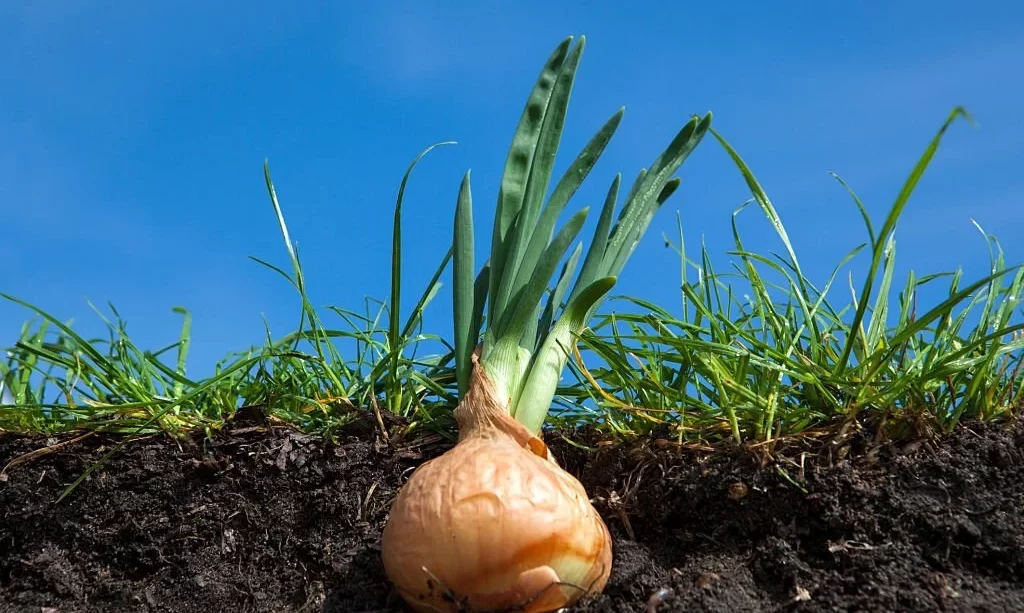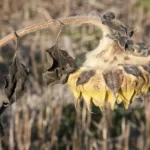Onions, with their pungent aroma and versatile flavor, are kitchen staples in households around the world. These humble vegetables play a starring role in countless culinary creations, from soups and stews to savory sautés. Yet, beneath their unassuming exterior lies a world of botanical wonders. One question that often piques curiosity is whether onions grow underground. In this article, we embark on a journey to demystify the hidden world of onion growth. By delving into the intricacies of onion anatomy and the various stages of an onion plant’s development, we aim to unveil the fascinating secrets that make onions a kitchen essential.
- Light yellow flesh and golden, papery skin
- Deeply sweet flavor when cooked
- Assertive flavor when raw
- Perfect for most recipes
Onion Anatomy
To answer the question of whether onions grow underground, we must first acquaint ourselves with the anatomy of these aromatic bulbs. Onions, like many other plants, possess distinct parts that serve specific functions. At the heart of the onion lies the bulb, the part of the plant we commonly refer to as the “onion”. This bulb is composed of multiple layers or “skins,” each protecting the delicate inner layers. When we think of using onions in our culinary endeavors, it’s the inner layers of the bulb that we have in mind—the crisp, juicy, and flavorful part that adds depth to our dishes.
However, an onion is more than just its bulb. It boasts a network of roots that extend into the soil, anchoring the plant and facilitating the absorption of water and essential nutrients. Above the ground, onion plants sprout shoots that develop into lush green leaves. These leaves not only contribute to the plant’s growth but also serve as indicators of its readiness for harvest. Understanding the various components of onion anatomy is essential to unraveling the mystery of whether onions grow underground.
The Onion Plant’s Growth Stages
The life of an onion plant is a series of stages, each marked by distinct changes and growth patterns. It all begins with a tiny seed, harboring the potential for a robust onion plant. The first stage of growth involves germination, during which the seed sprouts, sending roots into the soil and shoots above the ground. At this early stage, the onion plant is in its infancy, and the bulb has yet to form.
As the plant matures, it transitions to the bulb development stage. This is the phase where the onion bulb begins to take shape and gradually swells in size. While the bulb forms underground, it is essential to remember that it is not the entire onion plant but rather a specialized part dedicated to storing nutrients and water. Above the soil, the plant continues to produce green leaves and stems, which play a vital role in the plant’s overall health.
The journey from seed to bulb is a remarkable transformation, and understanding these growth stages is key to comprehending whether onions grow underground. By delving deeper into the fascinating world of onion growth, we can appreciate both the culinary and botanical significance of this beloved vegetable.
Do Onions Grow Underground?
The pivotal question at the heart of our exploration is whether onions truly grow underground. The answer lies in the remarkable way in which onions develop. While it might seem that onions grow entirely underground, the reality is more nuanced. Onions indeed have a substantial portion that grows beneath the soil—the bulb. The bulb, consisting of multiple layers, is the part of the onion that we commonly use in our culinary endeavors. It is where the plant stores essential nutrients and water for its growth and survival.
However, it’s important to clarify that the onion bulb is not the entirety of the plant. Above the ground, the onion plant produces green shoots and leaves. These above-ground structures are vital for the plant’s photosynthesis, a process that enables it to convert sunlight into energy. The green leaves also serve as a visual indicator of the plant’s health and maturity.
So, while onions have a significant underground presence in the form of their bulbs, they are not entirely subterranean. This dual existence—partly below and partly above ground—is what makes the growth of onions a fascinating botanical journey.
The Role of Roots and Shoots
To fully grasp the growth of onions, it’s essential to appreciate the roles played by both the roots and shoots of the plant. The roots, which extend into the soil, serve several crucial functions. They anchor the onion plant securely, preventing it from being uprooted by wind or other environmental factors. Simultaneously, the roots absorb water and essential nutrients from the soil, which are transported to the bulb and other parts of the plant.
Above the ground, the onion plant’s shoots and leaves are equally vital. The green shoots, which eventually develop into the recognizable long leaves of mature onion plants, contribute to photosynthesis. Through this process, the plant harnesses the sun’s energy to produce sugars, which are used for growth and nourishment. The leaves also play a role in signaling the plant’s readiness for harvest. When the leaves start to wither and turn brown, it is an indication that the onion bulb is mature and ready to be harvested.
In essence, the roots and shoots of the onion plant collaborate to ensure its survival and growth. While the bulb is the part we primarily consume and associate with onions, it relies on the support and contributions of these above-ground and below-ground components. Together, they create the fascinating story of onion growth, from seed to bulb, in gardens and kitchens worldwide.
Harvesting Onions
The culmination of an onion’s growth journey arrives when it reaches maturity and is ready for harvest. Determining the ideal time for harvesting onions is a critical aspect of onion cultivation. One of the key indicators of readiness is the condition of the onion’s leaves. When the green leaves begin to wither and turn brown, it signals that the onion bulb has reached its full growth potential. This is the opportune moment to harvest your onions.
To harvest onions, gardeners typically loosen the soil around the bulbs and carefully lift them from the ground. It’s important to handle harvested onions gently to avoid damage to the bulb’s protective layers. Once harvested, onions can be left to dry in the sun for a period, allowing the outer skins to harden and protect the inner layers during storage. Proper curing and storage techniques are essential to preserving the quality and flavor of onions for an extended period.
Culinary and Agricultural Significance
Onions hold a central place in both culinary traditions and agriculture. In the culinary realm, onions are renowned for their ability to enhance the flavor of countless dishes. They add a distinctive, savory note to soups, stews, sautés, and salads. Onions come in various types, from sweet onions ideal for grilling to pungent varieties suited for pickling. Their versatility and unique flavor profile make them indispensable in kitchens worldwide.
From an agricultural perspective, onions are a valuable and widely cultivated crop. They are grown in diverse climates and regions, making them an essential component of global agriculture. Onions contribute to local economies, provide livelihoods for farmers, and offer a sustainable food source for communities. Understanding the growth and cultivation of onions is not only valuable for gardeners but also for those involved in commercial onion production.
Conclusion
In conclusion, the question of whether onions grow underground reveals the intricate world of onion growth. While the onion bulb, the part we commonly use in cooking, develops beneath the soil, the entire plant is a testament to the marvels of nature. Onions employ a dual strategy, with roots delving into the ground to extract nutrients and a bulb forming as a reservoir for sustenance.
Harvesting onions at the right moment is a crucial aspect of onion cultivation, signaled by the changing color of the leaves. The culinary significance of onions is unmistakable—they elevate the flavors of dishes across the culinary spectrum. Additionally, onions hold immense agricultural importance, contributing to local economies and global food security.
So, whether you’re a gardener tending to your onion crop or a home chef savoring the complex flavors of a well-prepared dish, the journey of onions—from the soil to the plate—is a testament to the synergy between nature and culture.




